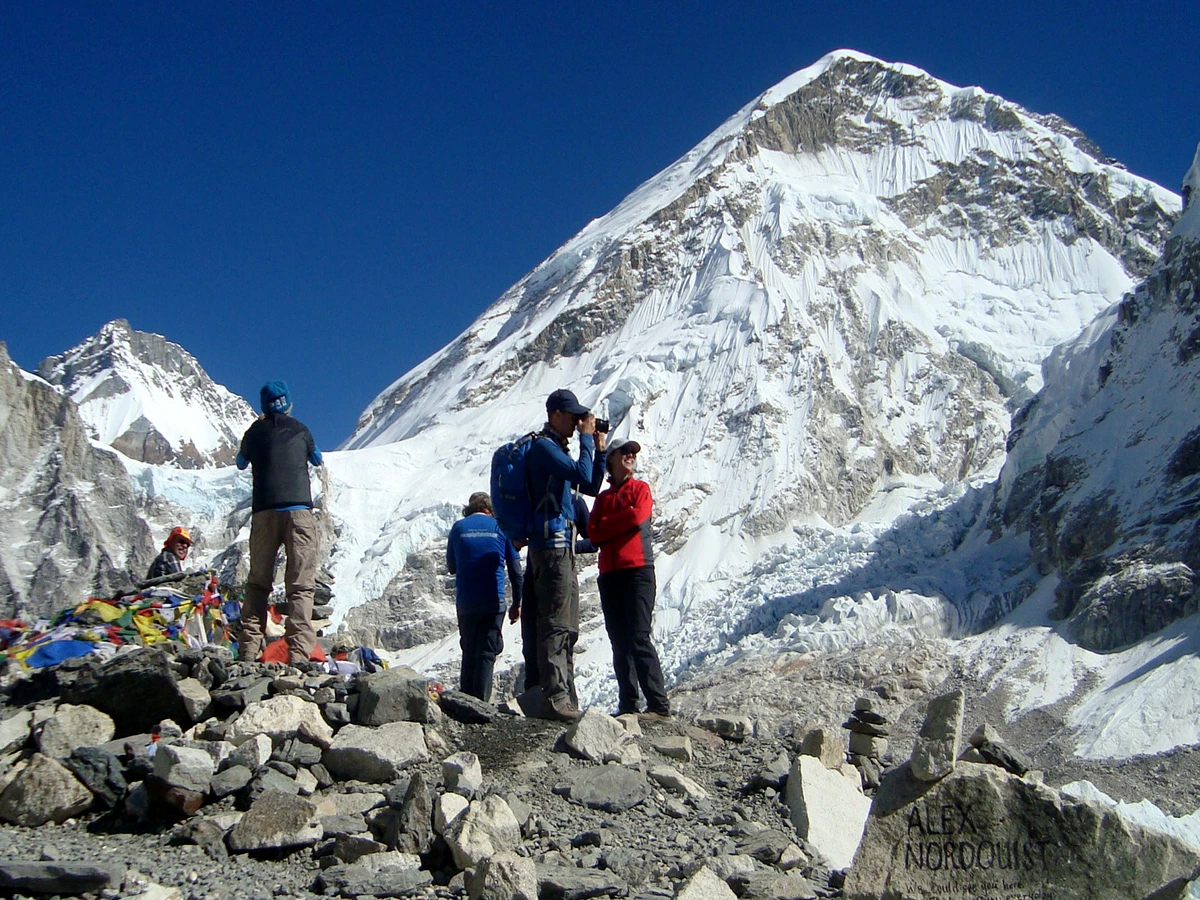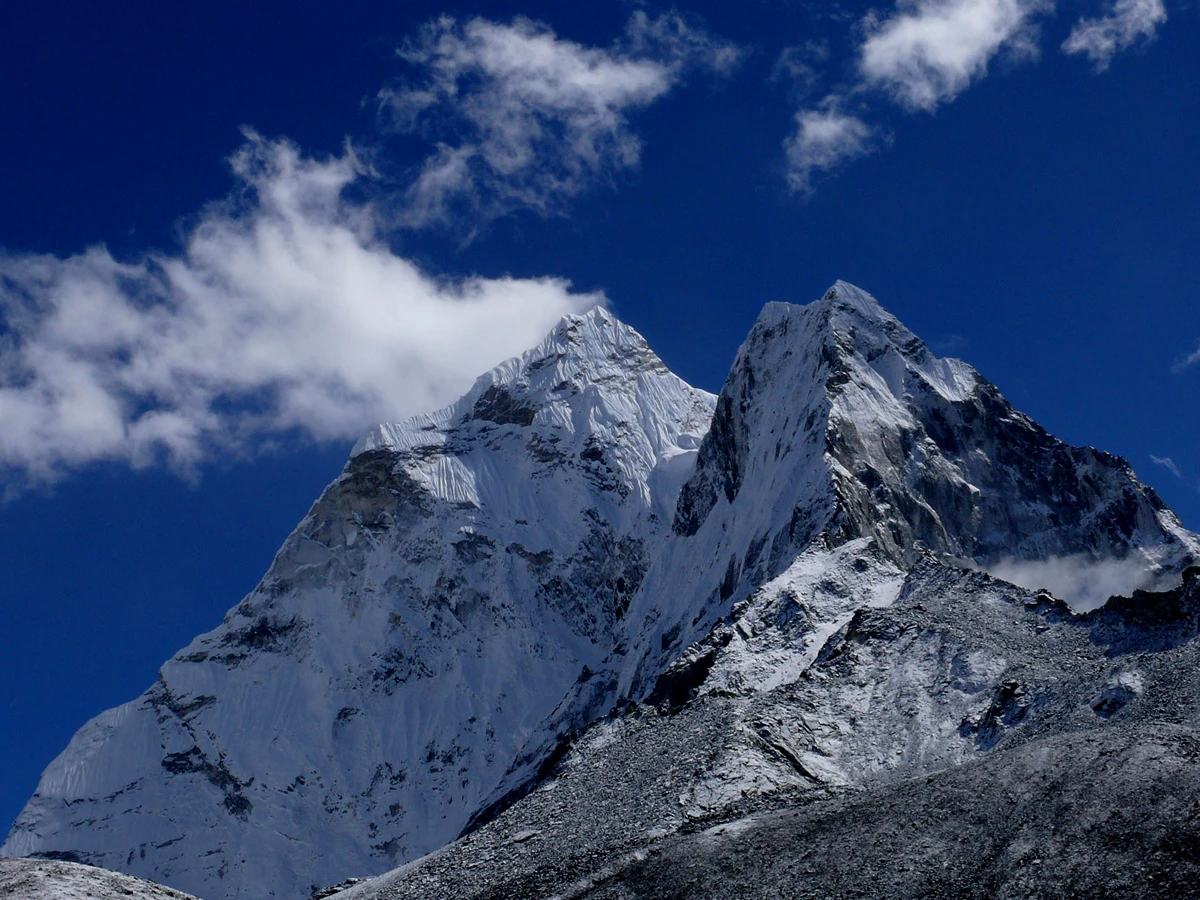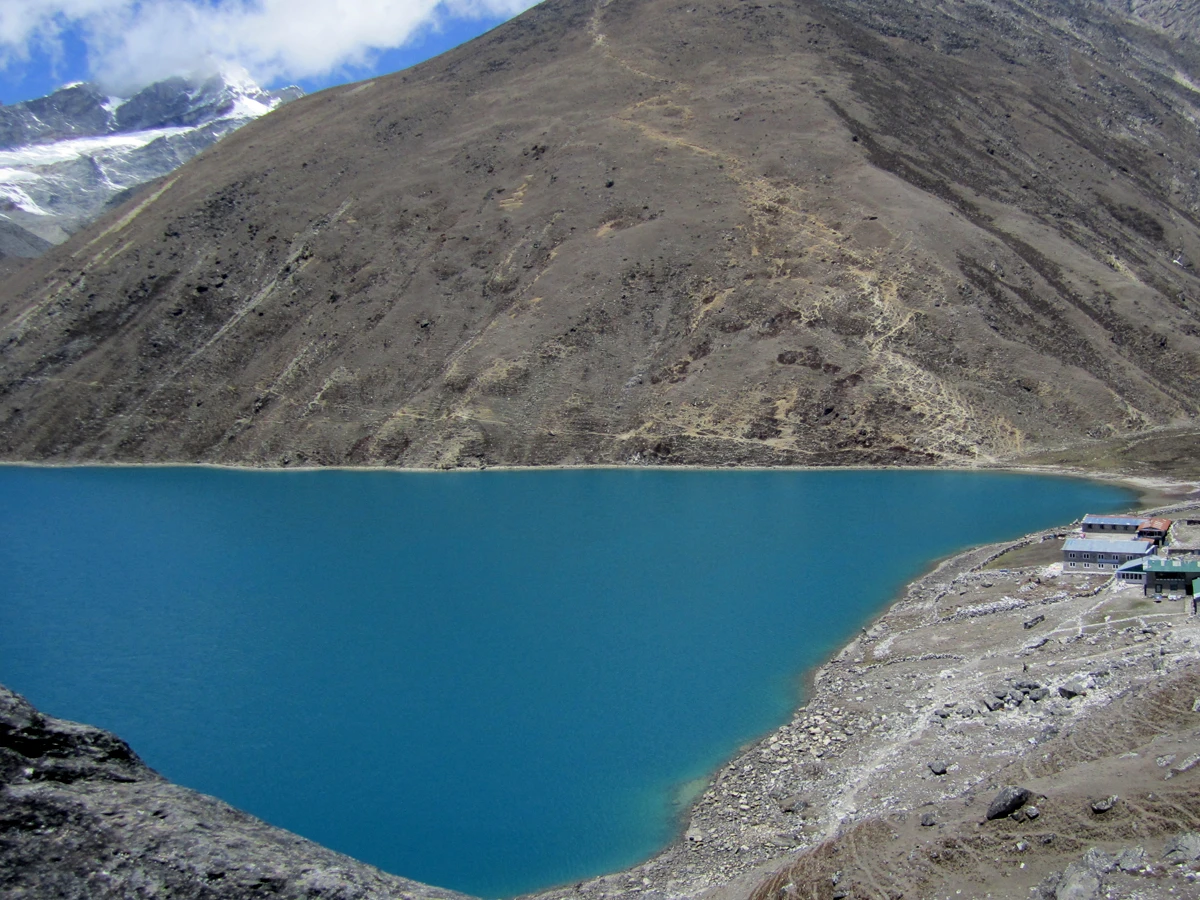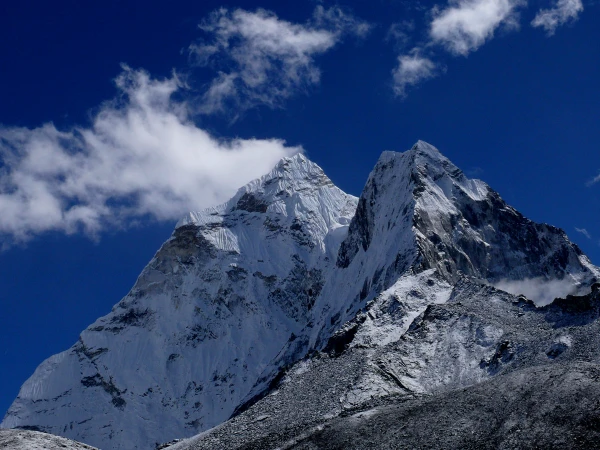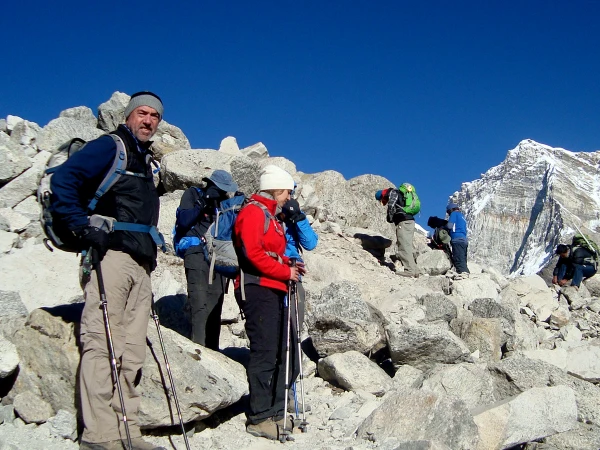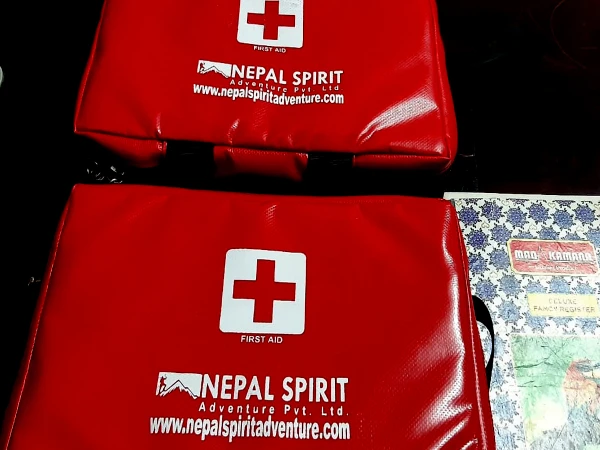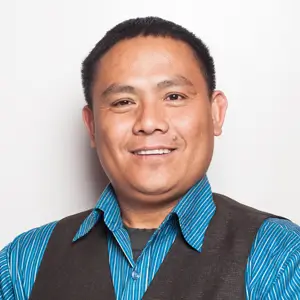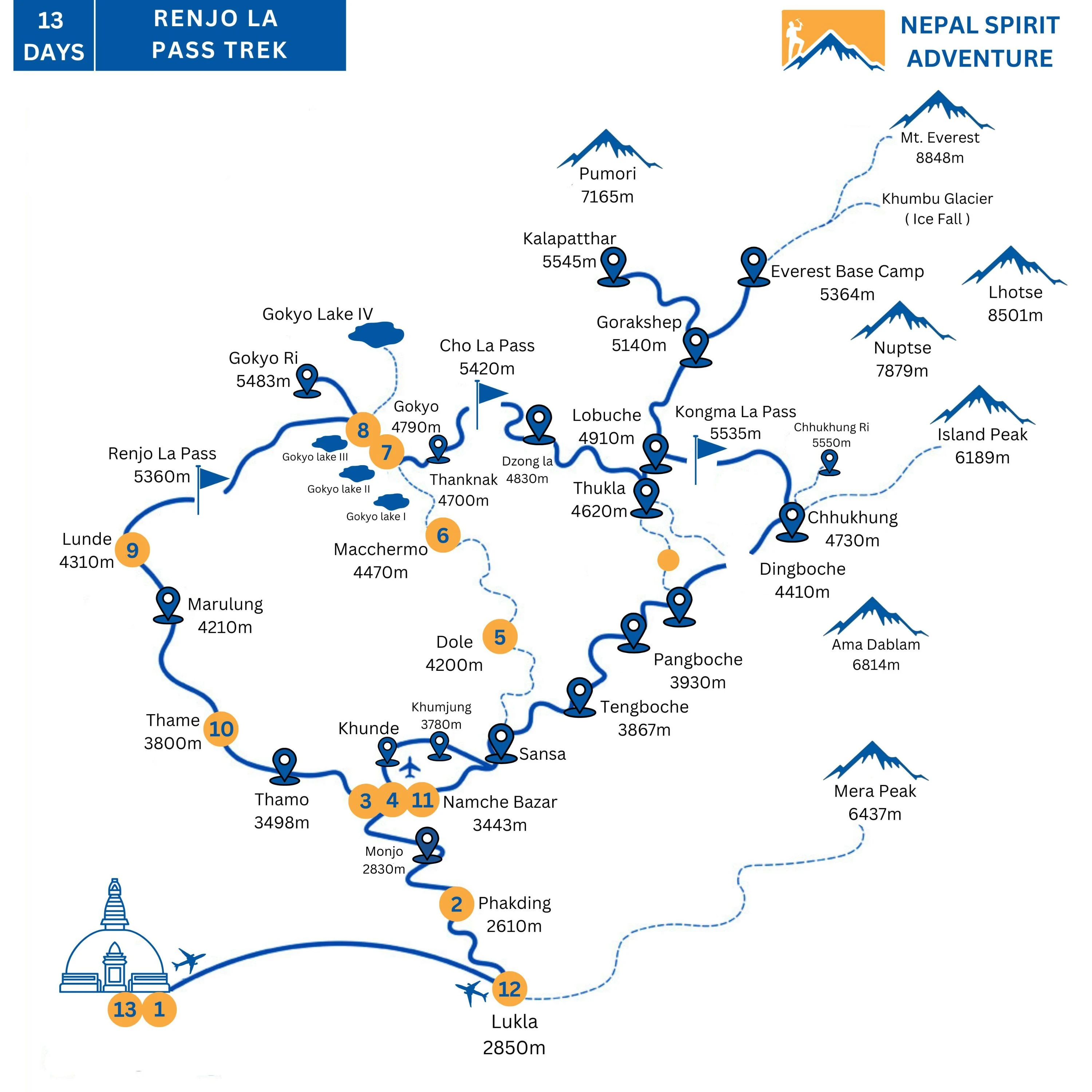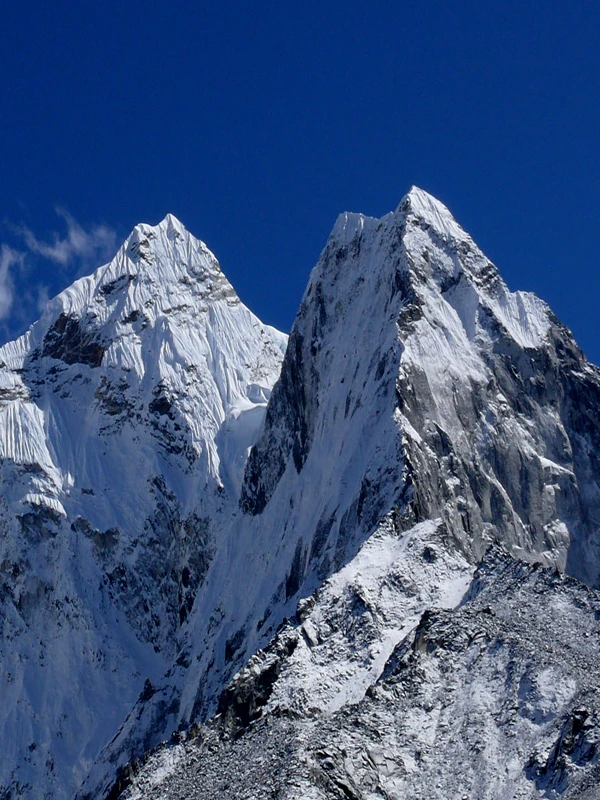Upon Arrival at Kathmandu Airport, Pickup:
On arrival in Nepal at Kathmandu Tribhuvan International Airport, our airport representative will receive you with a warm welcome and then transfer you to your respective hotel. Afternoon or evening time we will review and discuss with you much information regarding your trip itinerary and included/excluded services as per the trip itinerary chosen, at the same time introducing your guide who will help you with the final preparation for your trek.
Accommodation in Kathmandu:
We provide 3*** star tourist standard hotels in Kathmandu, with accommodation based on a twin sharing basis with breakfast. If you are trekking in groups joining a basis, you will share a room with someone of the same gender from your group. If you prefer a single room supplement in Kathmandu and on-route trekking, you can request the single supplement (which will be an extra cost besides the trip price stated). We can also help you book at different deluxe star category hotels on request. For more details and information, please feel free to contact us.
Accommodation During the Renjo La Pass Trekking:
We offer accommodation in a mountain lodge known as a tea house. A tea house combines the features of a guest house, restaurant, and social hub. The rooms typically have twin beds and minimal furnishings, which may include small tables and chairs. While blankets are generally provided, we recommend bringing your sleeping bags for added comfort.
Most bathrooms are shared and feature either squatting toilets (common in Asia) or western-style sitting toilets. Most tea houses and lodges have running water facilities. Additionally, while many lodges offer hot water for showers, there is usually an extra charge for using these hot showers.
Trekking Food:
During the trekking session, full board meals are included (breakfast, lunch, and dinner as well as tea or coffee provided). We provide food from these local lodges/tea houses as per the choices on the menu. Breakfast and dinner are provided at the same tea house/lodge, while lunch would be on the trail. Every Tea House serves the traditional Nepali meal Dal Bhat (rice and lentils), as well as a variety of different food items, such as rice, seasonal vegetables, noodles, potatoes, and soups. Some lodge serves western foods such as pizza, pasta, and French fries. Soft drinks, snacks, and beer are available in most of the Tea Houses' restaurants. A variety of cereals, bread, and egg dishes are generally available for breakfast.
Safe Drinking Water in Trekking:
Safe drinking water is very important while we are on trek, and we recommend that one should drink at least 3-4 liters of water a day (this helps from dehydration and altitude problems, AMS). Natural spring water is free but requires cleaning, adding purification pills or filters. Besides this, if you wish to drink sealed, packed mineral and boiled water, you can buy it en route at an extra cost will be charged $1-2 per liter.
Health & Fitness Required:
Health and physical fitness are the most important parts of travel and in participating trekking and hiking in the high altitude zone. If you do not have previous trekking experience as required, you can start with a morning walking exercise or cycling for weeks or months before/after booking the trip with us. If you have previous trekking and climbing experience, it will add a plus point to the trek chosen. Most of the trek is nontechnical effort walks.
The highest height gain on this trip at 5,360m/17,585ft above sea level, the walk involves lots of ups and down, walking through local villages, farmlands, terraces, and riverside as long as you have energy walking for 4- 6 hours a day, and if you are qualified for the trek but still requires moderate health and fitness. We strongly advise travelers to consult their medical doctor before traveling and do a regular check-up, and hand the report to us while booking a trip with us.
Our Experienced Trekking Guides and Staff with Safety:
Nepal's mountainous country walk takes you to the remote region; it is necessary that you are accompanied by an experienced and qualified guide and leaders for a safe journey and to make the trip a success. We at Nepal Spirit Adventure employ native trekking guides and porters who are trained and qualified for this type of trip and have worked with us for a long time.
Our guide provides much local information and offers you advice on how to use your free time, and by coordinating day-to-day events of the tour, although (sometimes) he might need you to understand that if things do not go according to our plan. Our trek guides are fully trained and licensed by the Nepal Government, certified by TAAN, and the Nepal Mountaineering Association.
All our trekking and climbing guides are well qualified and highly experienced, with 9- 10 years in this job. We provide training for our staff yearly on medical and climbing, with their efficiency, and cheerful attitude, providing help, information, and needs of the guests of various nationalities.
Assuring that all our trips are well managed by the expert team of tourism professionals, all our guides have good knowledge regarding the culture and customs of the routes on trekking and tours, share experience and cultural insights of the country that’s missed out in travel guide books. During your time with us, you will have time to learn Nepali phrases and other cultural aspects during the journey. As we organize varied treks in the Nepal Himalaya, on group trekking, we provide a trek leader with an assistant leader on each trek, depending upon the size of the group.
This ensures safe travel with us as our guide/assistance guides get any health medical problem, we still have other main guides and leaders to run the trip smoothly as per our standard itinerary. To make the trip enjoyable, we provide one guide to support and carry your bags among two people with one Sherpa helper in certain conditions.
Caring Porter:
Our porter is fully equipped with warm gear and insured on each trip by the company. We take care of our staff/porters' welfare as well as the client’s safety. We closely work with the (PAC) Porters Association International Act. We allow a maximum load to be carried by our porter of 20 to 25 KG and make sure that your trekking duffel-kit bag should not be more than 20 KG.
Re-Charging Batteries of Electronic Items on The Trek:
We can recharge your batteries, devices with electricity or solar power sources. In Nepal, 220- 240 volts 50 MHZ (50 Cycles per Second) power is supplied. Just need to have a plug adaptor in case of socket fitting, which you can buy in Kathmandu before the trip, since the plugs in Nepal might be different. You might have to pay a small amount of fee/hour for using the recharging facilities.
High Altitude Sickness:
Altitude sickness, often known as acute mountain sickness (AMS) in general may occur when people ascend too quickly in altitudes of over 3000 m. Most people will feel some effect of altitude, shortness of breath, and possibly light-headedness, which is fairly common. Acute mountain sickness is very different and normally involves a severe headache, sickness, and loss of awareness. In almost every potential case, there are enough warning signs to take appropriate action. When symptoms of altitude sickness develop, please tell your trekking guide. He will advise you to deal with your problem. Generally over overexertion and dehydration contribute to altitude sickness. So drink at least 3-4 liters of water every day, besides tea and coffee, which act as diuretics.
Group Size:
We organize any route of Nepal trek with a fixed departure basis or private trip, the minimum group size would be tw, and the maximum group size is ten or more on request. We can also organize private trips for solo people with a single supplement cost. Otherwise, join our estimated group departure dates available online market or ask us for your personal, suitable, flexible dates,a nd we will open the group date on the same date.
